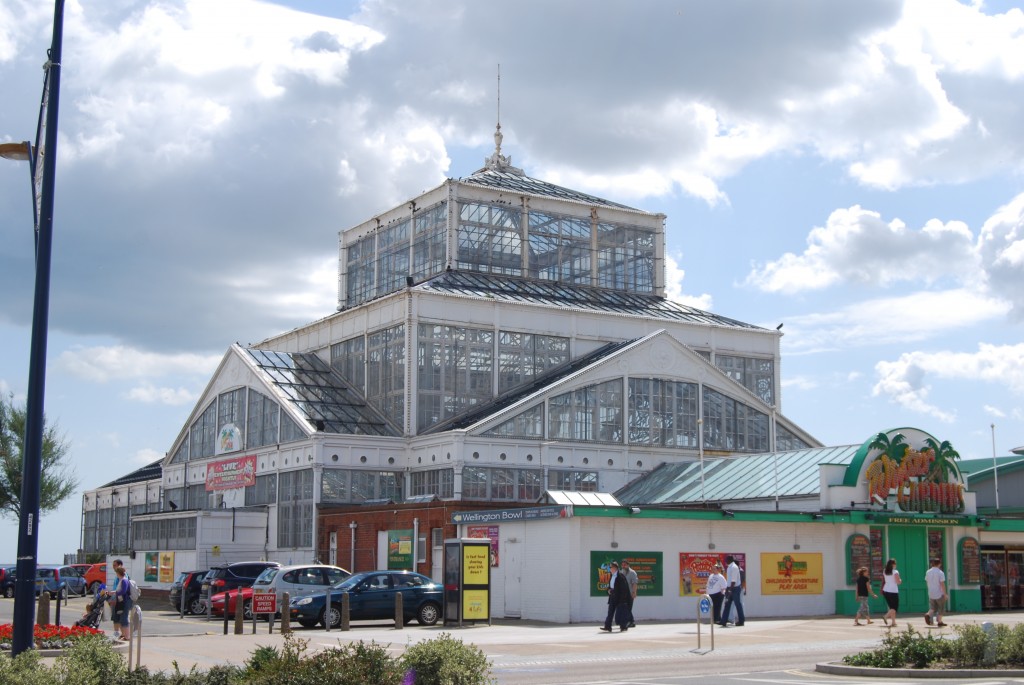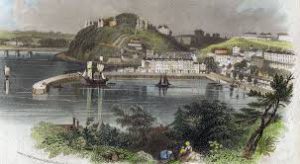We all know that every twenty years or so we build a white elephant in Torbay. These tend to be sold to us with the promise that they won’t cost rate payers anything and will enhance our towns. We won’t name those built in the past but you can probably guess…
Incidentally, the term white elephant refers to an extravagant but burdensome gift that cannot be easily disposed of. It’s based on the legend of the King of Siam giving rare albino elephants to courtiers who had displeased him – they were then ruined by the animals’ upkeep costs.
This isn’t a new thing. One of our unsuccessful ventures can be seen as you go up Torwood Street from the Harbour. This impressive building just past Park Lane was started just before the Great War and was intended to be Torquay’s Opera House. When the war started the work stopped and after hostilities ceased there just wasn’t the money to finish the project. Only the shell was complete and ever since then it’s been used for a variety of purposes.
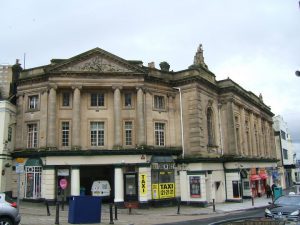
Another unsuccessful Torquay project was the original Winter Gardens, designed and constructed in Torquay by John Watson and William Harvey between 1878 and 1881 at a cost of £12,783.
Approximately 170 ft long, this was a cast iron and glass conservatory with a performance platform for musical, vocal and concert party entertainments. It could seat up to 1,000 people for concerts held by an Italian band, and also featured three tennis courts and a bowling alley. The walls of the base are still in their original position under the Yardley Manor Hotel on Museum Road.
The ironwork was by Jesse Tildesley of the Crescent Iron Works, Willenhall in Staffordshire. When constructed it was one of the three largest cast iron and glass seaside winter gardens in England and represents the culmination of Victorian cast iron and glass design and technology, of which Paxton’s Crystal Palace is the most famous example.
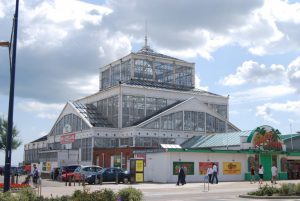
It was, however, unsuccessful in Torquay. It bankrupted the original lessees and was put up for sale. It was suggested that the Winter Gardens just wasn’t suitable for the sophisticated English Riviera. Yet one town’s misfortune was another’s opportunity. In 1903 Great Yarmouth Borough Council’s Surveyor, J W Cockrill, thought that the building would be suited to his archetypical working class seaside town on the North Sea coast to “lengthen the season with better class visitors, and on wet days to provide for 2,000 persons under cover”.
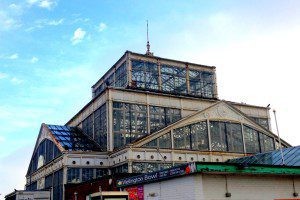
It cost Great Yarmouth the knock down price of £1,300, a small proportion of the original outlay. The building was subsequently dismantled in sections and transported the 350 miles to Norfolk by barge at a cost of £1,115 and ten shillings. It was said that remarkably no pane of glass was broken in the removal. The Winter Gardens was then re-erected by the entrance to Wellington Pier on Great Yarmouth’s Golden Mile in 1904. Cockrill then added a brick-arched entrance porch for a cloakroom and in 1909 laid a maple floor for roller skating and it had an organ above the entrance at the west end. It was used for concerts, dancing and skating, while the interior was adorned by flower beds, trailing plants and displays in hanging baskets. This was “A landmark structure gleaming and brilliant in the hot Norfolk summers and complimenting huge East Anglian skies. At night the building was flooded with electric light which beamed out across the seafront and reflected back on the sea. As radical and unnerving as the new moving picture houses springing along the parade.” The photo shows the interior of the Winter Gardens at Great Yarmouth in around 1904.
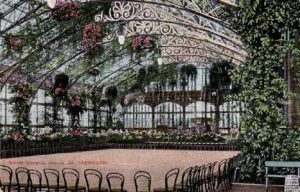
Over the years its uses included a brief period during the 1990s as a night club under the management of comedian Jim Davidson. There are now plans to restore the Winter Gardens to its former glory.
Rescued from almost certain demolition in Torquay the Winter Gardens is the last surviving seaside Victorian cast iron and glass Winter Garden in the country. Torquay’s loss was Great Yarmouth’s gain.


